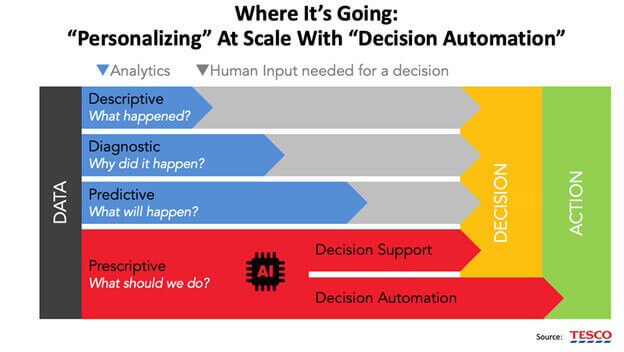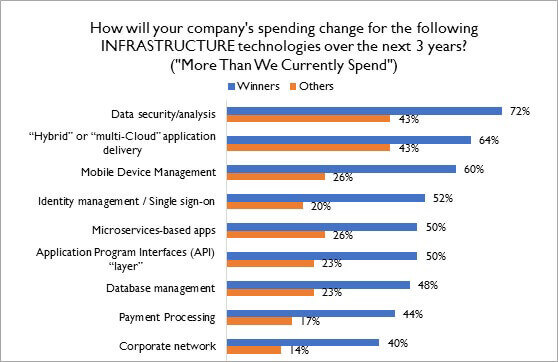OmniChannel: What Were Once Luxuries Are Now Necessities
Since RSR published its 2017 benchmark report on the state of Omnichannel retailing (Omnichannel Retailing 2017: Retail’s Existential Challenge, June 2017), things have changed – or have they? As we all know from our daily lives, rapid adoption of consumer “smart ” mobile technologies in the “Great Recession ” years irrevocably changed how we all shop. That happened a while ago.
What did change since we published the report in June is that Amazon announced the decision to buy Whole Foods. That in turn caused arguably the most risk-averse group of retailers – grocers – to finally admit that Omnichannel (or – if you still object to the label – a selling environment that includes both digital and physical shopping activities) applies to them too.
Anyway, that’s the common perception. But when I looked into responses to our survey (which we ran in January through February 2017), responses from fast-moving-consumer-goods and general-merchandise retailers (FMCG & GM) showed that changes were already afoot. For example, FMCG & GM retailers felt more strongly than any other segment of our response pool that the objective of their companies’ Omnichannel strategy is to “focus on meeting customers’ needs rather than selling as many products as possible ” (63%, compared to 47% overall). And only slightly fewer FMCG & GM retailers than others indicated that their multi-channel customers are more profitable than single channel customers (47% vs. 52% by the overall response pool).
So when it comes to broad strokes at least, FMCG & GM retailers didn’t need a kick in the pants to get going on an Omnichannel strategy – they were already headed in that direction. If nothing else, that suggests that all the “sky is falling ” press coverage that the Amazon coverage generated was a little hyperventilated. But never let facts get in the way of a good panic attack. In the days following the Amazon/Whole Foods announcement, grocery stocks took a hard hit. According to the Washington Post:
“SuperValu, which has a network of 2,000 grocery stores across the country, took one of the biggest hits. Its stock … ended the day down 14 percent. Kroger… fell by 9 percent Friday. Shares of some major retailers that have entered the grocery world also dropped. Target and Walmart were each down 5 percent. “
What’s Really Happening
FMCG & GM retailers are well aware of the business challenges that they face in a world of information-empowered consumers. When we asked them to identify Top-3 challenges, those retailers showed that they are more sensitive to the fact that consumer expectations outpace their ability to respond, and more FMCG & GM retailers are concerned that consumers know more about the products that they sell than their own employees do. The only finding that the Amazon/Whole Foods announcement is likely to have changed is the last one in the chart below.

So what is happening, that causes traditional retailers to be so concerned about the Amazon/Whole Foods announcement?
Here’s a theory: Whole Foods doesn’t sell food, it sells a lifestyle. But most grocers sell … food. This gets to the question: what’s the value proposition? Food (all by itself) is a necessity, not a luxury. And because of that, grocers in particular have focused on delivering a standardized assortment at the lowest possible cost to consumers. The value proposition is “low price & convenience ” – really basic.
No one would ever accuse Whole Foods of being either one of those things: it is certainly not “low price ” and you usually have to drive across town to get to one, so it’s not convenient. So what is it selling? Lifestyle! People who shop Whole Foods self-identify as being concerned about eating healthy food, and well-off enough to pay more for the privilege.
Amazon has always been in the lifestyle business, even if many of their products are everyday items. It was once a luxury to be able to order stuff from home, but now it’s a baseline expectation – it’s become a necessity. And so (assuming that merger of Amazon’s customer-centered capabilities and Whole Foods’ lifestyle brand works), the grocery shopping experience will demand new capabilities from the traditional players. The barriers to compete will have gotten much higher.
No So Different, After All
Once again, I’ll point out that the data from RSR’s Omnichannel study suggests that FMCG & GM retailers aren’t particularly more challenged than other retailers when it comes to the internal obstacles they face (chart):

The survey data tells a similar story when it comes to the state of technologies used to support an Omnichannel selling environment. To quote the report, “incrementally chipping away at old processes and the systems that supported old ways of shopping just is not working out. ” That’s as true for FMCG & GM retailers as it is for fashion merchants.
And so, the real bottom line to the Amazon/Whole Foods storyline isn’t new, but it now comes with emphasis-added. FMCG & GM retailers aren’t being pushed by the new competition, but by consumers. Shoppers have moved beyond thinking of their digital capabilities as luxuries – now those capabilities are necessary for a good shopping experience.
So for all retailers, regardless of vertical, or new or existing competition, the message is the same. As the RSR benchmark concluded, “This really is an existential challenge, as big, if not bigger than the challenge of Walmart in the early 2000’s. We learned then that only the strong survive. The same is true today. The strong WILL survive, with effort and hard work, and recognition that we cannot continue business or investments as usual. The time is now. “
